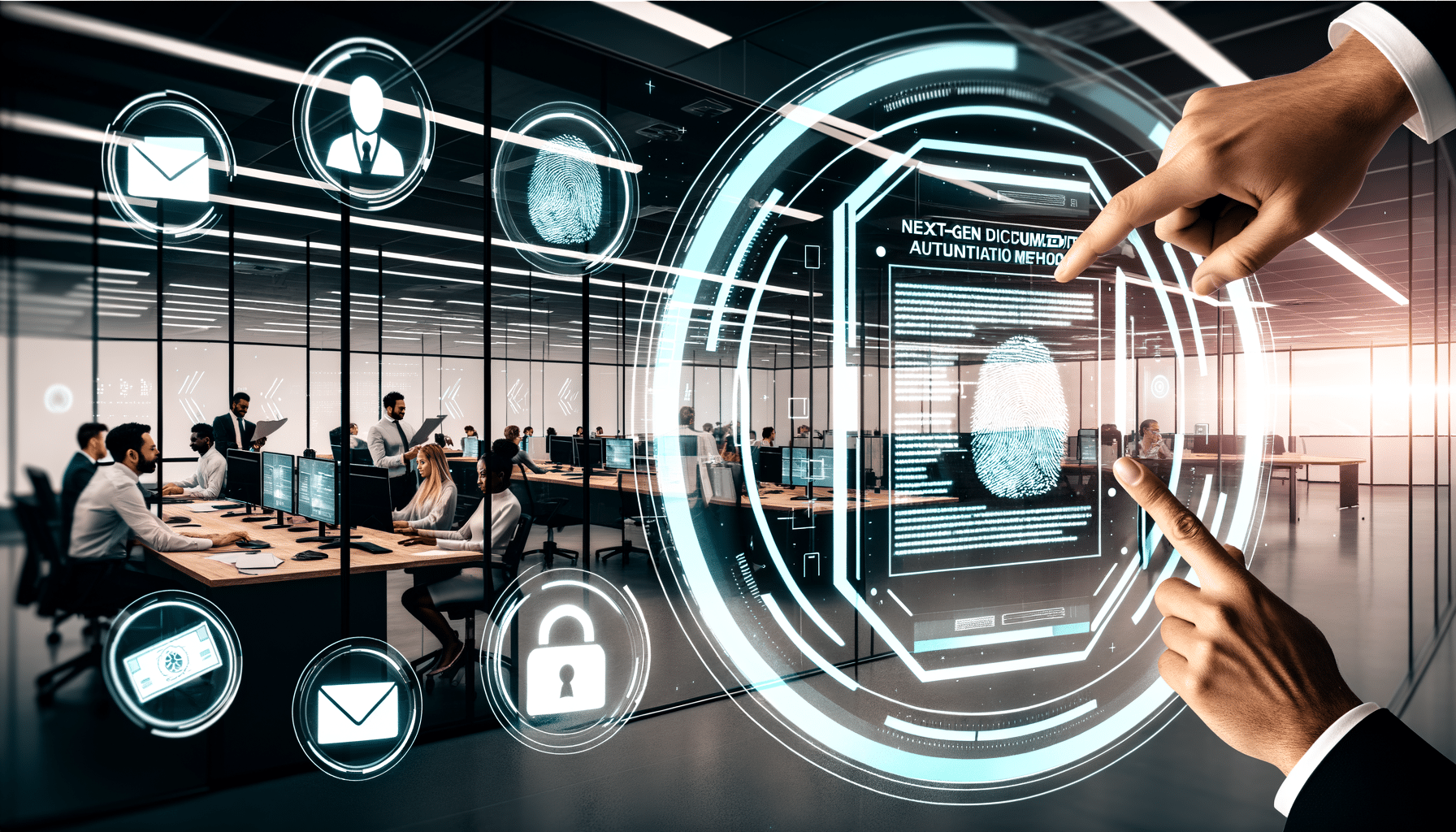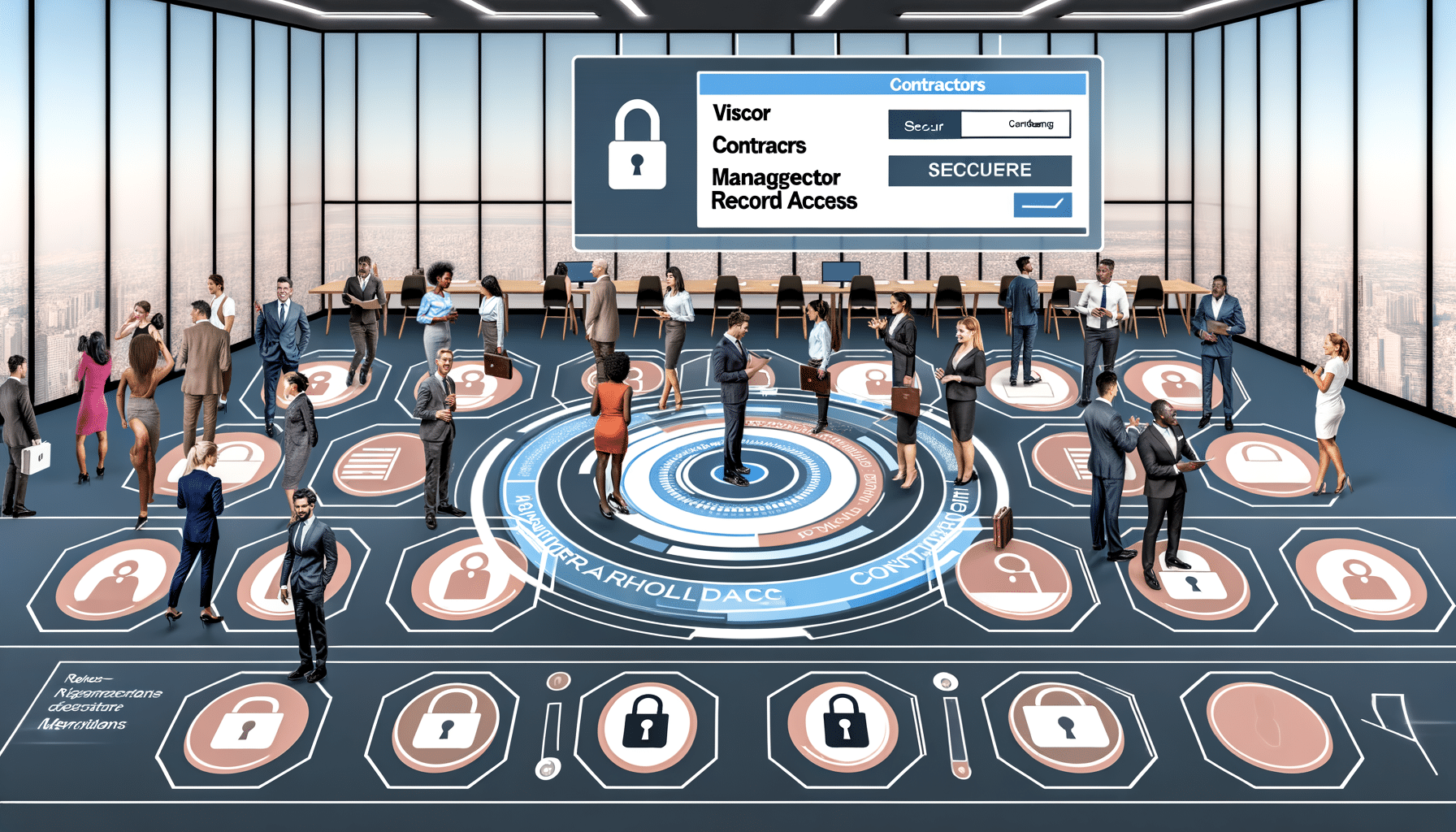- Archive Security
- November 16, 2024
Next-Gen Document Authentication Methods

Revolutionizing Document Authentication: A Glimpse into the Future
As someone who has navigated the ever-evolving landscape of digital security and innovation, I understand the challenges faced by finance, legal, and compliance heads when it comes to document authentication. It’s not just about securing a signature on paper; it’s about ensuring every piece of data associated with a document is verified, secure, and trustworthy. Modern document authentication methods are rapidly shaping the future of data security, making them indispensable for efficient record keeping.
Why Traditional Methods Aren’t Enough Anymore
Traditional document authentication methods often involve manual verifications and physical stamps, processes that are time-consuming and prone to human error. With the rising tide of cyber threats and digital forgery, these methods are no longer sufficient. The complexity of today’s data requires innovative solutions that are both robust and agile.
The shift from physical to digital records demands new strategies. As organizations strive to become paperless, secure methods of verifying document authenticity have emerged as a top priority. This evolution in technology brings with it opportunities to reimagine how we authenticate documents, leveraging modern innovations to enhance both efficiency and security.
AI: The Vanguard of Document Authentication
Artificial intelligence (AI) has become a cornerstone in developing sophisticated document authentication methods. Our platform at RecordsKeeper.AI uses AI to automate the categorization and verification of documents, minimizing the risk of human error while expediting the authentication process.
Leveraging machine learning algorithms, AI systems can analyze and identify document anomalies, detect forgery, and recognize patterns that may indicate fraud. This not only ensures higher accuracy but also allows rapid processing, saving valuable time for compliance officers.
Blockchain Technology: Immutable and Transparent
When I envisioned RecordsKeeper.AI, integrating blockchain technology was paramount. Blockchain offers a distributed ledger that ensures data cannot be tampered with once recorded. By storing document hashes on a blockchain, it becomes possible to verify the authenticity without revealing the document’s content.
The immutable nature of blockchain makes it an ideal tool in document authentication, guaranteeing that records have not been altered. This transparency builds trust across all parties involved, ensuring compliance with industry standards like GDPR and HIPAA.
Biometric Verification: The Power of Personal Identification
Biometric verification is another modern method gaining traction in document authentication. Utilizing unique biological traits such as fingerprints, facial recognition, or even voice patterns, biometric systems add an additional layer of security by ensuring that the document handler is indeed who they claim to be.
This method enhances security by making it exceedingly difficult for unauthorized users to access confidential records. As companies and institutions see the benefits of this technology, its integration into document management systems will only increase, paving the way for more secure record keeping.
Cloud-Based Authentication Platforms: Seamless and Scalable
In today’s fast-paced business environment, scalability and accessibility are key. Cloud-based authentication solutions provide seamless access to document verification tools from anywhere in the world, fostering a new era of collaborative work environments.
These platforms offer flexible solutions that can be tailored to meet specific organizational needs. They can integrate with existing IT infrastructure, ensuring that as an organization grows, their document verification capabilities can scale alongside without compromising on security.
The Role of Automated Compliance Tools
Navigating the labyrinth of industry regulations is no small feat. Automated compliance tools, like those offered in RecordsKeeper.AI, are indispensable for organizations that must adhere to strict legal requirements. These tools automatically manage policy enforcement, ensuring document retention and deletion are executed correctly and in line with standards such as SOX.
With built-in audit logs and reporting features, these tools not only authenticate documents but provide a paper trail for regulatory audits. This level of detail is crucial for legal and compliance heads tasked with maintaining stringent governance over record management systems.
Conclusion: Embracing the Future of Document Authentication
The future of document authentication lies in embracing these advanced methods that promise enhanced security and efficiency. By integrating AI, blockchain, biometrics, and cloud technologies, organizations can protect their valuable data from cyber threats while ensuring compliance with industry standards.
As we journey forward, I encourage you to explore these next-gen document authentication methods. Let’s modernize record management to transform what was once a tedious obligation into a strategic advantage. For more insights into these innovations or to learn how RecordsKeeper.AI can streamline your document management, follow along with my ongoing exploration of entrepreneurship and tech innovation.
Toshendra Sharma is the visionary founder and CEO of RecordsKeeper.AI, spearheading the fusion of AI and blockchain to redefine enterprise record management. With a groundbreaking approach to solving complex business challenges, Toshendra combines deep expertise in blockchain and artificial intelligence with an acute understanding of enterprise compliance and security needs.
Related Posts


Handling Sensitive Records in Open Offices
Maintaining confidentiality in open workspace layouts.
- December 9, 2024
Archives
- January 2025
- December 2024
- November 2024
- October 2024
- September 2024
- August 2024
- July 2024
- June 2024
- May 2024
- April 2024
- March 2024
- February 2024
- January 2024
- December 2023
- November 2023
- October 2023
- September 2023
- August 2023
- July 2023
- June 2023
- May 2023
- April 2023
- March 2023
- February 2023
- January 2023
- December 2022
- November 2022
- October 2022
- September 2022
Want to get more content like this?
Signup to directly get this type of content to your inbox!!
Latest Post
Document Control for Equipment Maintenance
- January 20, 2025
Managing Records for Multiple Clients
- January 19, 2025
Handling Conference Documentation
- January 18, 2025
Setting Up Department Record Reviews
- January 17, 2025





